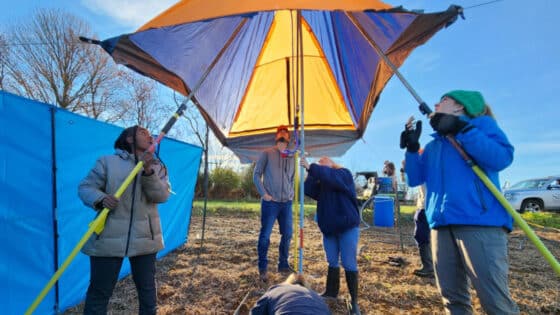Mallin, M.A., S.H. Ensign, M.R. McIver, G.C. Shank, and K. Fowler. 2001. Hydrobiologia 460:185–193.
Abstract
Coastal areas in the United States and many other countries are considered to be desirable regions to live and recreate. However, as human use of coastal land and water increases, so does the incidence of aquatic-borne disease from contact with contaminated water and eating contaminated shellfish. Movement of humans into coastal areas both greatly increases the number of sources of microbial pathogens and radically alters the landscape through increased construction activity and paving of former natural areas. On a regional scale, increases in human population over a 14-year period in coastal North Carolina were strongly correlated with increases in shellfish bed closures due to high fecal coliform bacterial counts. On a watershed scale, an analysis of several tidal creeks found strong correlations between mean estuarine fecal coliform bacterial counts and watershed population, percent developed area and especially with percent impervious surface coverage. Conversion of natural landscapes to impervious surfaces (roads, drives, sidewalks, parking lots and roofs) removes the land’s natural filtration capability, allows for increased concentration of pollutants at the land’s surface and provides a means of rapid conveyance of pollutants to downstream waterways. An analysis of rural watersheds in the Coastal Plain found that stream fecal coliform counts and turbidity were both strongly correlated with rainfall in the previous 24 h in watersheds containing extensive industrial swine and poultry operations, as well as watersheds containing more traditional agriculture and cattle husbandry. In contrast, in watersheds rich in swamp wetlands these relationships were not significant, even in watersheds containing extensive animal production. Based on these findings, we suggest that waterborne microbial pathogen abundance can be minimized in urbanizing coastal areas through reduced use of impervious surfaces and maximal use of natural or constructed wetlands for passive stormwater runoff treatment. In animal husbandry areas, retention of natural wetlands and management practices designed to minimize sediment runoff can likely reduce inputs of pathogenic microbes into streams.


